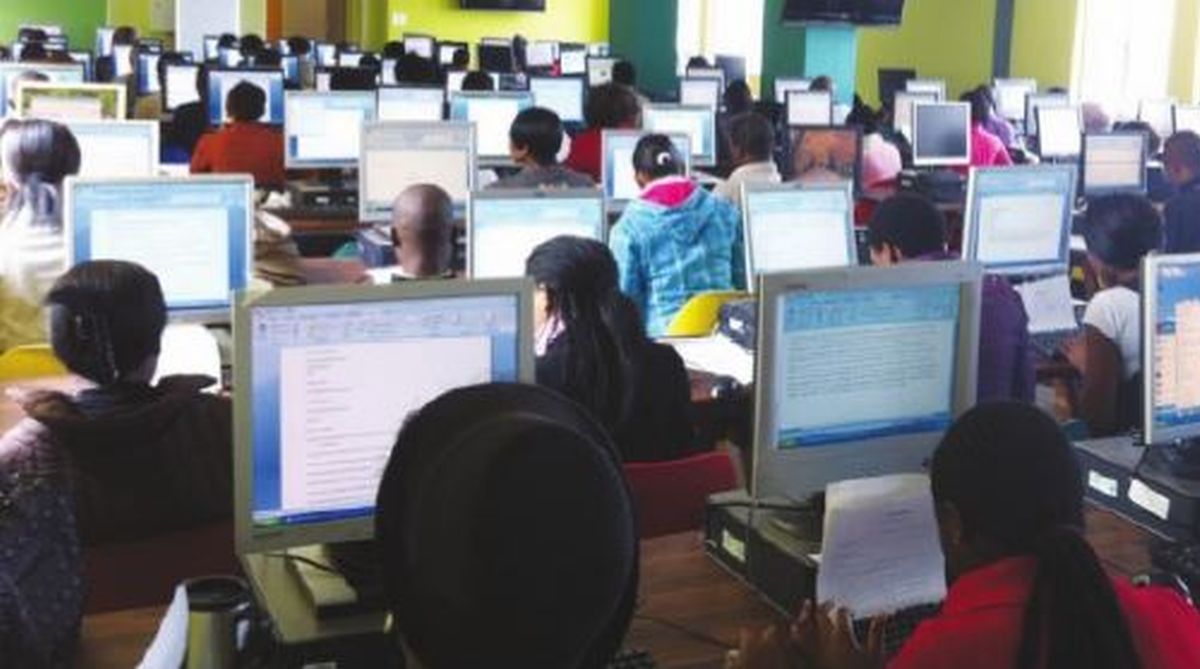If you are a candidate giving a competitive exam, you need to be aware that touts cannot help you; they are out to cheat you!
For every competitive exam, there are a number of fraudsters who claim that they have access to the question paper. There could even be fake papers circulating on social media. In the case of computer-based testing, there are other technology-based practices – imposters making promises to fake the biometrics, touts claiming to have hacked the server, companies advertising Bluetooth devices to help crack the paper, and so on.
Advertisement
There have also been cases where a candidate sneaks a camera into the hall, and posts actual images of the question paper on social media and WhatsApp during the exam. However, these images actually help identify precisely which console has been used and hence which candidate has attempted the fraud. Every single one of these attempts have led to police cases, ending with the candidate getting barred for life.
Tests taken in paper-pencil mode are far more vulnerable to leakage and malpractices. Computer-based testing, on the other hand, has rapidly evolved over the last few years to prevent fraud. Here’s a peak behind the scenes to show how computer-based tests are helping to catch fraudsters and prevent cheating.
Question papers are not set by humans: In a computer-based test, the question paper is not printed. Experts create a bank of questions and then the question paper is assembled by a software algorithm that selects appropriate questions based on a Question Paper blueprint. No single individual has access to all the questions and answers.
The question paper is encrypted: Today’s technologies allow the machine-assembled question paper to be encrypted before it is sent out to the test centres. The question paper is decrypted only at the time of the first click by the candidate. This makes the question paper fully secured.
No two question papers are the same: New technologies for computer-based testing include smart algorithms that create multiple question papers with the same format and level of difficulty. This means that questions and options are randomised for each candidate.
One question on the screen at a time: The candidate can access just one question at a time. Moreover, there are time limitations for questions, which again reduce the chances of getting answers from outside.
The exam servers are fully protected: High stake exams are conducted using secured, standalone servers where the question paper files are encrypted. In addition, the candidate consoles do not support remote access. All these measures prevent hacking attempts or access by any fraudsters. Also, the system will trigger real time alerts if anyone tries to manipulate the computer system.
Candidates’ biometrics are verified: Computer-based testing is in real time and the centres check the identification of each candidate carefully. Photo recognition algorithms are used to compare the candidate’s face with the photo submitted in the application. Candidates are asked to provide fingerprint verification and handwriting samples which are used to check identity. Biometrics are also taken mid-test for confirmation of identity.
Exam security: In the test centre, candidates are seated randomly and will not know in advance which machine will be allotted to him or her. All data regarding the test are transmitted from the exam centre to a central command centre system. The command centre is used to monitor patterns that indicate cheating.
The CCTV feed from the centre also helps in spotting suspicious cases. Centres typically use metal detectors to check for mobile phones or other electronic devices. However, security has improved to a much higher level – a few centres now use RF signal detectors and noise signals to block the use of mobile phones or Bluetooth devices.
Social media can be your enemy: Candidates sometimes try to click pictures of the computer screen and share the images via messaging platforms or social media. This is risky because the order of questions and answers provides a clear trail identifying the miscreant.
New technologies also allow for each candidate’s ID number to be projected as a watermark on the screen. A picture of the computer screen can actually provide clues to identify which candidate has shared the image. Candidates should be aware that cheating the system is a slippery slope that leads to the nearest police station, and getting barred for life. So be smart — don’t fall prey to scams and false promises.
The writer is global head of TCS iON.











